Ruth E. Carter Dressed the 'Coming 2 America' Cast in “the Majesty of Contemporary Africa”
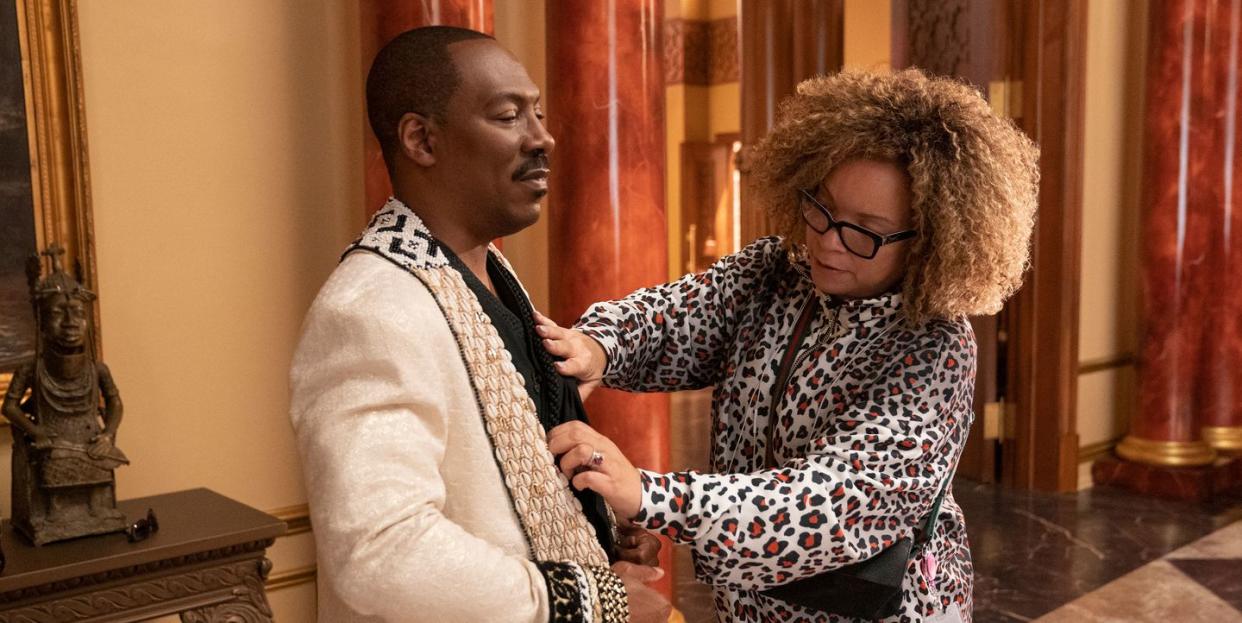
- Oops!Something went wrong.Please try again later.
- Oops!Something went wrong.Please try again later.
Two years ago, when Ruth E. Carter won the Oscar for costume design for her work on Black Panther, both she and her profession were under a spotlight like never before. Carter was on panels, in magazines, and interviewed for TV shows, sharing how she created the world of Wakanda and emerging as the face of her crucial, yet oft-unsung, sector of the film industry. She, however, had long been a formidable force in Hollywood, with more than 30 years in the business. Her credits include such classics as School Daze, Love & Basketball, Malcolm X, and Amistad, the latter two earning her Academy Award nominations. Carter recently added two more highlights to her illustrious career: a star on the Hollywood Walk of Fame and heading up costume design for Coming 2 America.
“I’ve always been a very focused person about the craft that I decided to pursue,” Carter tells BAZAAR.com via Zoom, shortly before Coming 2 America premiered on Amazon. “I’ve always felt like a student of my passion and that I wanted each experience to be greater than the last.” Though working on the sequel to one of the most beloved movies of all time came with a lot of pressure, filming, she says, was incredibly fun. “The overall feeling on set was jubilant. When people dress in the majesty of contemporary Africa, it gives them a really good feeling.” During our conversation, she is fittingly dressed in that majesty, wearing a blue-and-yellow blazer by L.A.-based African clothier Kutula—one of the many brands she pulled for Coming 2 America.
Ahead, Carter discusses her approach to the film, standout pieces, and how she hopes her career will influence the next generation of costume designers.
How did you come to be involved in this project?
I had worked with Eddie [Murphy] six times before, and we were just finishing up Dolemite Is My Name. His producing partner, Charisse Hewitt-Webster, approached me, and she said, "We're going to do Coming 2 America, and you're going to do it with us, right?" And I said, "Yeah, I am."
You never know when things are going to happen, and this one came together rather quickly. The director, Craig Brewer, was also the director of Dolemite Is My Name. He walked up to me, and he said, "Did Eddie ask you to do Coming 2 America? We're going to start that right away." I thought, I need a break from Dolemite! It’s a period piece, and those are a lot of work. But I was excited. I was also nervous, because the first one was so well liked.
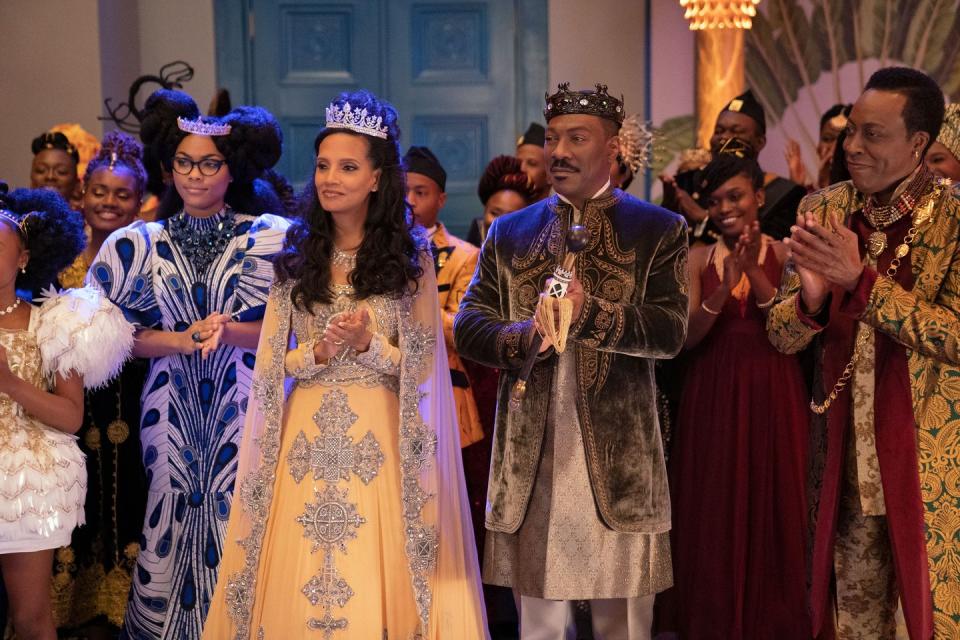
Did the popularity of the first film add to the pressure of the job?
Oh, of course. But luckily, the story was a continuation, so I got to say to myself, "How would this look 30 years later? And how would we interpret Coming to America with what we know now? What would be fresh for the new generation to see with the new film?" That provided a lot of opportunities. Not only was the story a continuation, but it was the opposite of the first movie. It was actually America coming to Zamunda, with the young son learning how to be a prince and meeting the royal family and discovering their day-to-day world. So I got to create Zamunda.
Costume design is a relatively small field. Have you ever worked with or crossed paths with Deborah Landis, who did the costumes for the original film?
Oh, yes, Deborah and I are colleagues. I'm on the Board of Governors for the Academy, and she's on the executive board. We started a scholarship fund at UCLA, where she’s the chair of the costume design division. The Lucas Foundation has already given us a generous donation towards the fund for young African-Americans who want to study costume design at UCLA. I think I talk to Deborah once a month.
Did you talk at all about this film?
Well, when I was nominated for [an Oscar] for Black Panther, Deborah and I were put on a lot of panels together to just talk about Wakanda versus Zamunda. So I heard a lot of her lectures about her approach to Coming to America. But I didn't want to focus too much on those ideas, because this was a new story. I wanted to give the new generation something else. I could glean from our interviews together what her intention was and transfer what we knew and loved into the new film, while also doing some things that were unique.
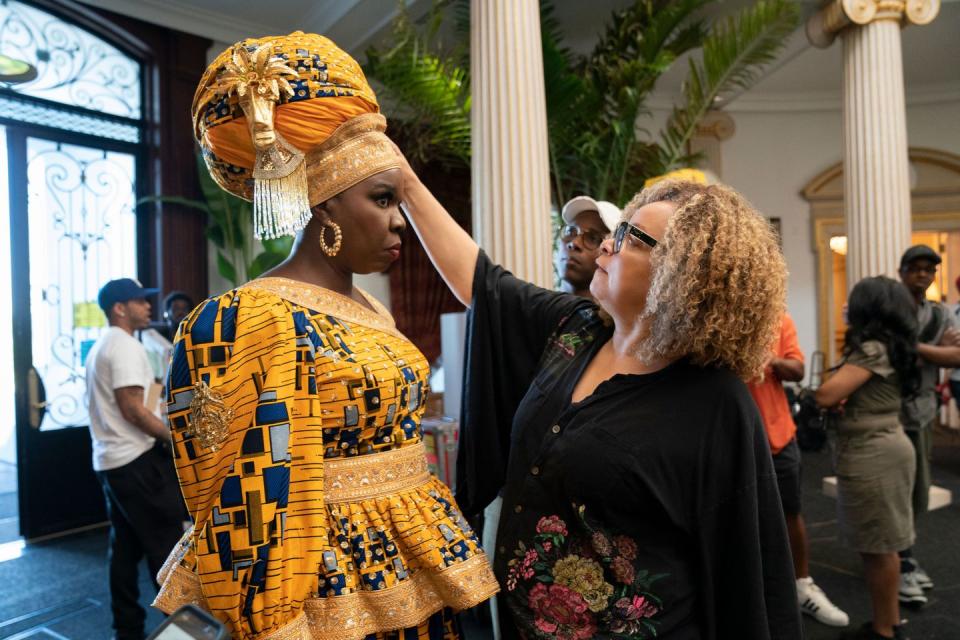
The movie was filmed in Atlanta. What was working there like? And what was the mood on set?
Atlanta was wonderful. We did Wakanda [for Black Panther] there, and there are lots of folks of color in Atlanta, so it was inclusive, which was a perfect scenario. We were at Tyler Perry Studios and were able to access a lot of the local markets to buy pieces from, which was great.
For the costumes, you used a lot of wonderful Ankara fabrics and African prints. Where did you source those?
We made some of them and worked with our resources in Africa for others. Laduma Maxhosa did the palace staff with the South African and ballet graphic knits. And we got a lot of Ankara fabrics from Vlisco, which is the original Dutch manufacturer of Ankara fabrics. We also shopped locally and bought from African designers all over Atlanta, which was wonderful. We have a list of about 40 different collaborators that we worked with on this film.
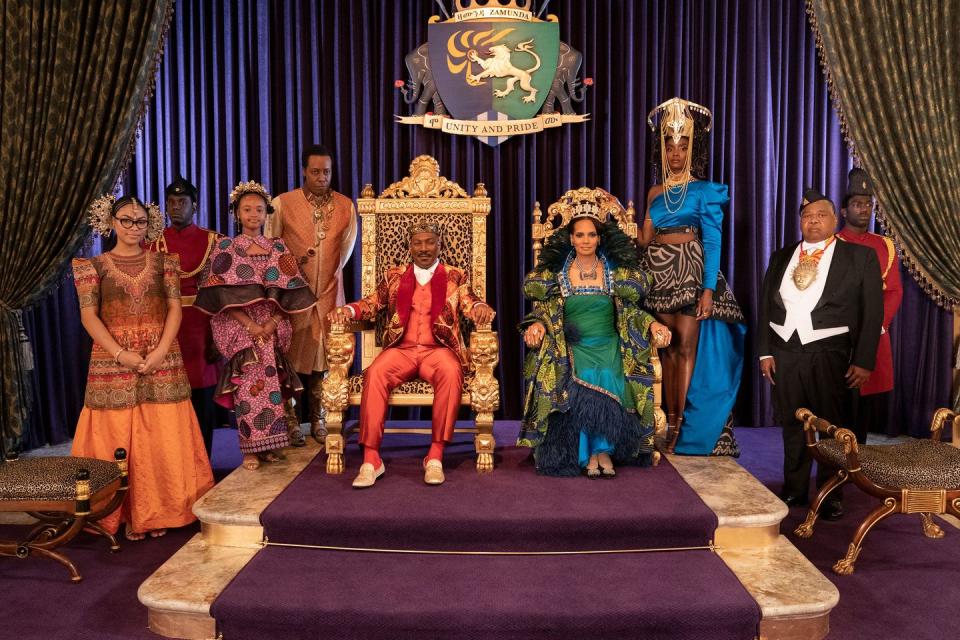
How big was your team?
There were about five tailors, and each had a team of seamstresses. Then there was a dye room with a dyer and few assistants. We had a craft area, and they did headwear—geles and crowns. There were about 25 people on a daily basis, not including outsourcing. We had people building things all over the world.
What percentage of the looks were custom versus bought or borrowed from designers?
The only looks that were bought were the ones on Leslie Jones and the aunts and uncles in Queens. You don't want to customize those pieces, you want to buy them so they look authentic. About two percent of the looks were bought, and the other 98 percent were custom.
There are a few pieces that really stand out. Can you tell us about the embellished robe Eddie Murphy’s character wears throughout the film?
I found a wall hanging in a vintage store [The Way We Wore on La Brea in Los Angeles] that was embroidered with these beautiful shells and beads, and I thought it would make a wonderful trim on the robe. So we bought beads and shells, and took the hanging to a beader, and she matched it perfectly.
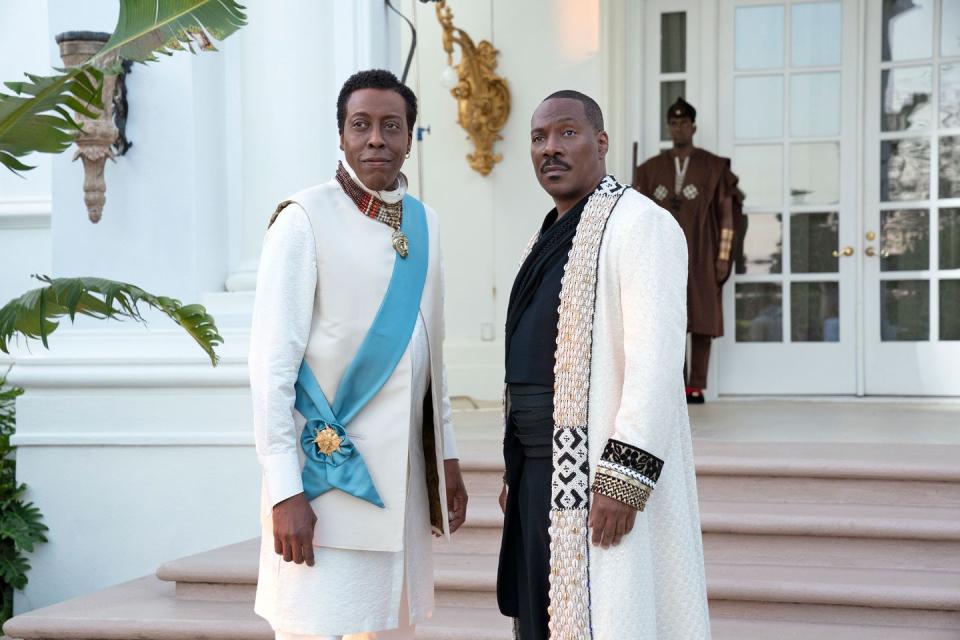
In one scene, En Vogue appears in these jewel-tone gowns and Salt-N-Pepa are wearing updated versions of their iconic '80s jackets. How did you settle on these looks?
The first film had a lot of big shapes, and we wanted to honor that. We did solid colors for En Vogue to separate them from the crowd in that scene, which was an explosion of patterns and Ankara. They wore incredible African jewelry, and we used scuba fabric for the dresses, which shapes beautifully. For Salt-N-Pepa, we had lots of pictures of their jackets from the '80s and were planning to replicate them. Their road manager saw what we were making and said, "I have those in the car." So he brought them out, and they wore them. We didn’t have to finish making the new ones.
That's amazing. When we first see Teyana Taylor's character, she's in this magnificent black-and-gold cape with a matching outfit underneath. How did you approach that look?
I had the fabric for the robe in my office and I kept thinking, How am I going to use this? Every time I tried to, it wasn't quite right. Then Teyana had this moment where she comes into the room and has a grand reveal. The cape originally had a huge collar that fanned out, but her Afro was also so big that the collar was too much. So we turned it down, and it just became this mood for her. For the outfit underneath, I was inspired by a picture I saw on Pinterest. I thought it was perfect for her to perform that dance number in, so we made it. She performed her butt off in it!
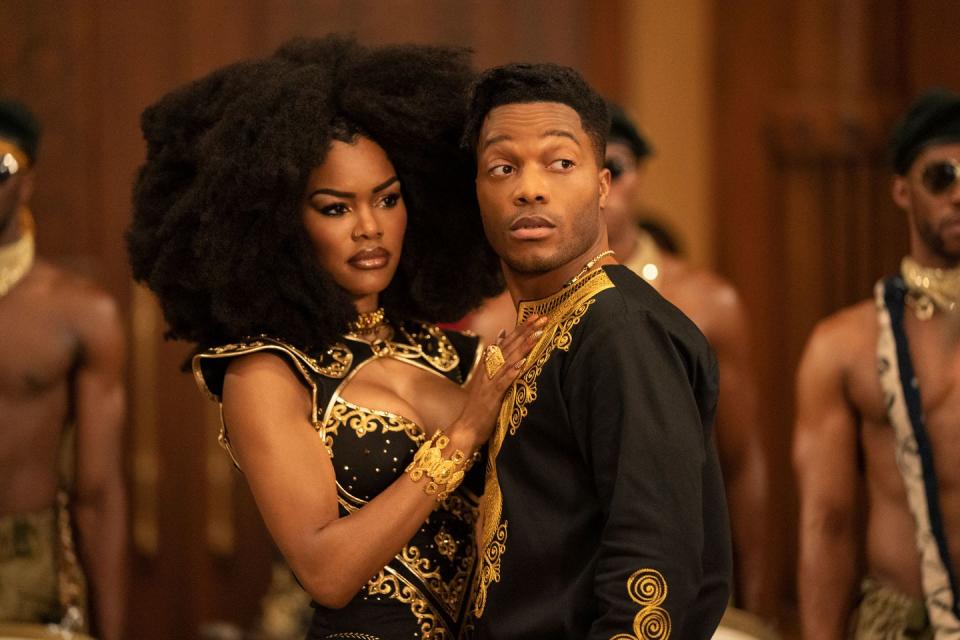
In the original film, James Earl Jones wears a lion's head draped over his shoulder, and Eddie Murphy wears an ocelot. There’s a scene in the sequel where Eddie Murphy wears something similar, but it's not an actual animal. How did you approach the updated version of this piece?
We wanted to be cruelty-free 30 years later, so we 3D-printed a lion's head for Eddie that he wears as a large piece of jewelry, and we gave it a scarf that represented the mane.
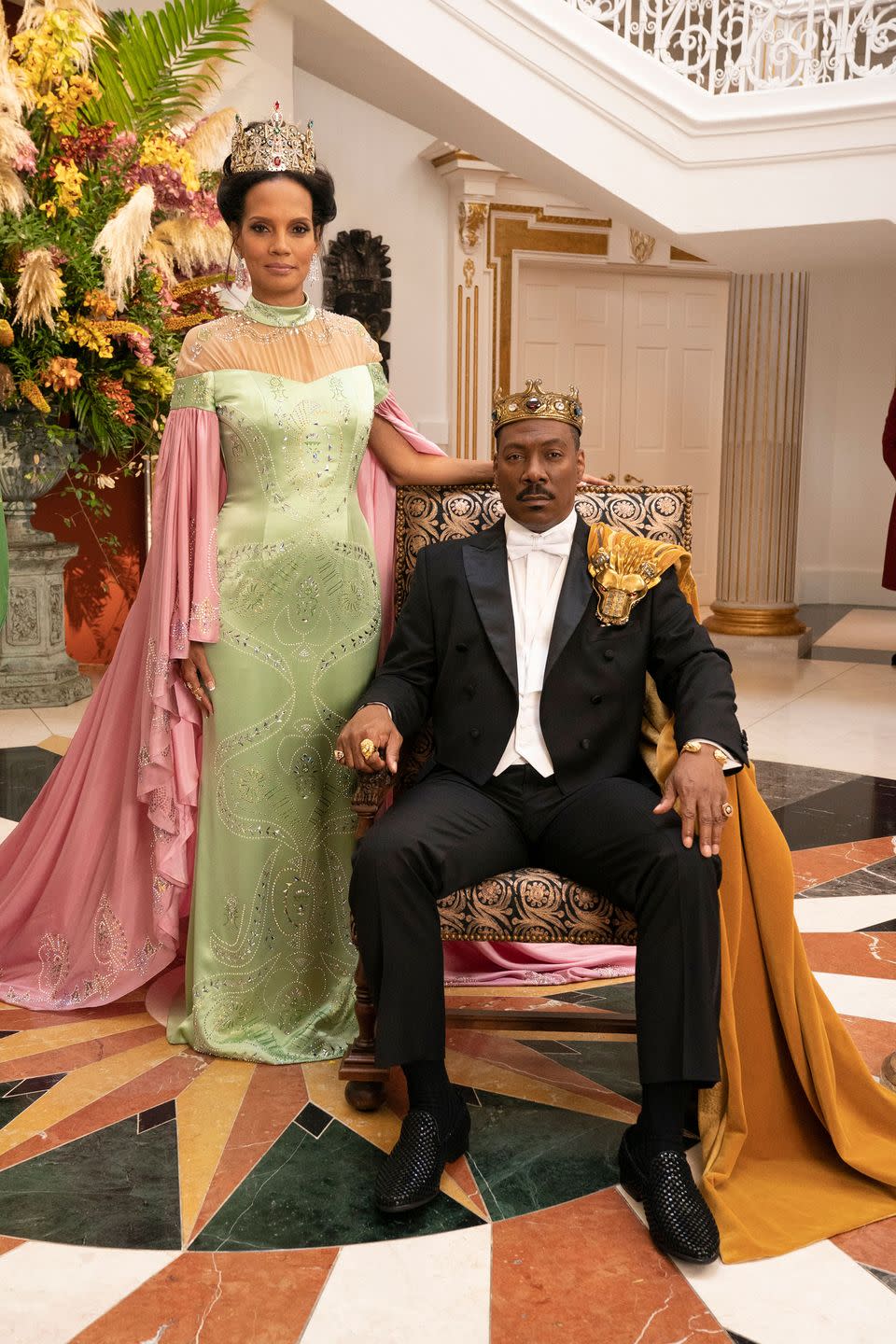
How did the looks for Wesley Snipes, Rick Ross, and the soldiers come together?
We took a military approach with General Izzi’s [Wesley Snipes’s] look and layered it with African necklaces. Then, we blinged them out a little bit just to show his character, who was very self-absorbed and loved his status. We really wanted him to be ostentatious. Rick Ross was a lot of fun to dress, especially for the last scene. I had an Indian blazer done for him that was beaded all over, and it fit him perfectly. I think he might've kept it. We were filming in his mansion, so I was really happy that he liked his costume.
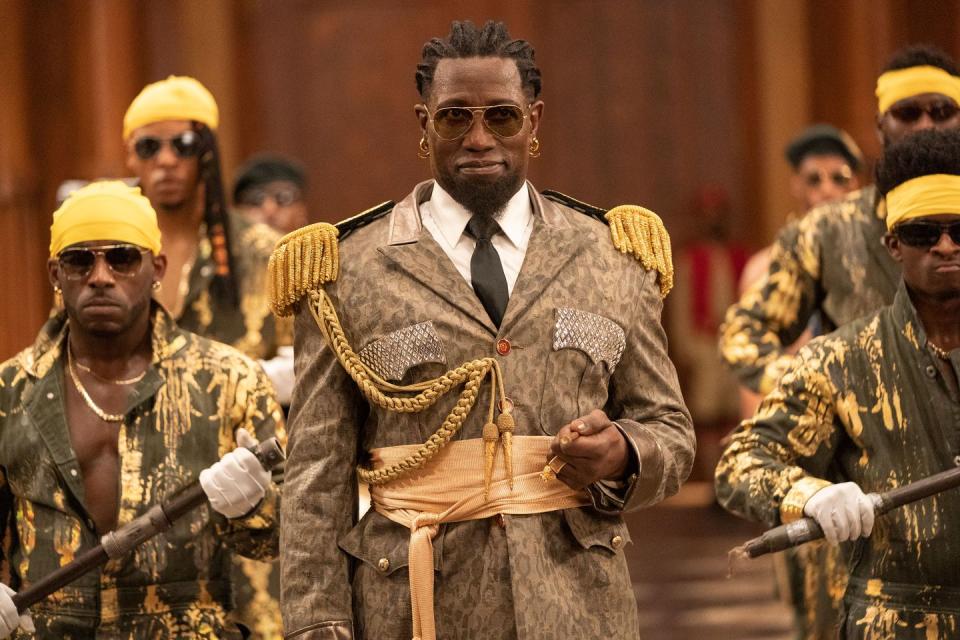
And what went into creating the wedding dress toward the end of the film?
I'd been following this designer, Claude Kameni of Lavie by CK, and she’s famous for Ankara dresses with big ruffled trains. She and I got together and sourced a lot of fabrics. It was really hard to decide, but we knew that we wanted to use red. The dress was layers and layers of Ankara and organza, and she had to make the train in two parts. There was a special room for the dress, because it was too big to hang up anywhere. On the day that we filmed it, we had to build two dollies to go under the train so Nomzamo [Mbatha] could walk without having to tug it behind her.
You also designed Coming 2 America–themed packaging for Crown Royal, right?
Yes, Crown Royal approached me about the packaging, and I knew right away that I wanted to use a beautiful lion's head and the royal embroidery print that we came up with for the film. … I was able to instill a lot of the aesthetics from the movie into the package design.
Looking back on your career, what has it been like to witness the industry become more diverse and inclusive?
When I look around in the department stores that I’m in, or I’m at studio services, which is a place we go to for films, and I see a young Black costume designer checking out clothes, I feel like I had a stake in that—a part in influencing that person to come into this profession. I feel really proud. I hope that my influence in some of the films that people know and love, that I have done, has created an avenue for other costume designers to come into the industry. I feel it has.
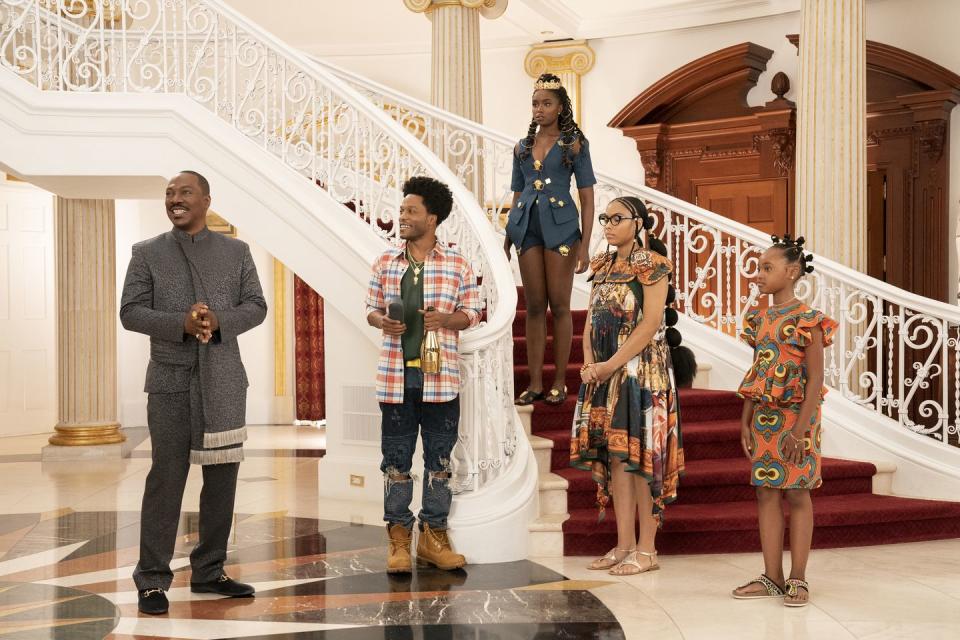
This interview has been edited and condensed for clarity.
You Might Also Like

